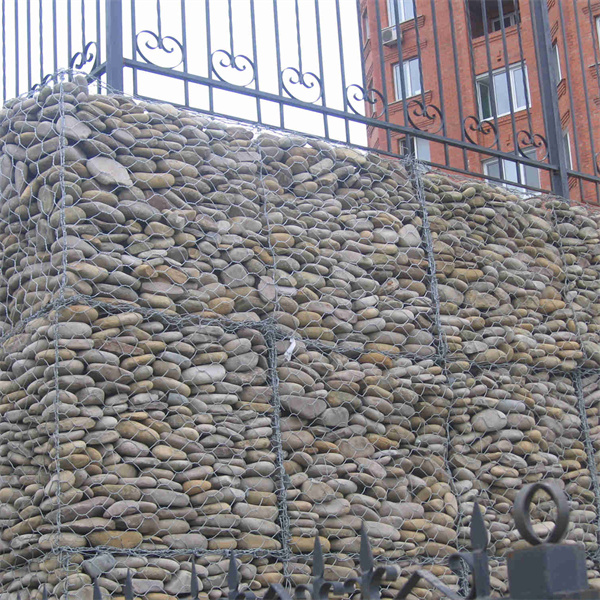okt . 21, 2024 05:51 Back to list
Supplier of Gabion Sea Walls for Coastal Protection Solutions
The Rising Popularity of Gabion Sea Walls A Sustainable Solution for Coastal Protection
In recent years, coastal erosion has become a pressing environmental issue, threatening ecosystems, infrastructure, and communities around the globe. To combat this pressing challenge, innovative solutions have emerged, among which gabion sea walls have gained significant attention for their effectiveness and sustainability. This article explores the benefits of gabion sea walls, their construction process, and the role of suppliers in facilitating this environmentally friendly option.
What are Gabion Sea Walls?
Gabion sea walls are structures made of wire mesh cages filled with rocks, stones, or other granular materials. They are designed to absorb and deflect wave energy, protecting shorelines from erosion and storm damage. Unlike traditional concrete sea walls, gabion structures are permeable, allowing water to flow through while still providing stability and support to the shoreline. This permeability helps mitigate the adverse effects of adjacent land erosion, making gabion sea walls an eco-friendly alternative.
Advantages of Gabion Sea Walls
1. Sustainability One of the primary advantages of gabion sea walls is their sustainability. The materials used—such as locally sourced stones—reduce the carbon footprint associated with transportation and industrial processes. Additionally, the natural aesthetic of stone and vegetation can blend harmoniously into coastal landscapes.
2. Cost-Effectiveness Gabion sea walls tend to be more cost-effective than traditional masonry sea walls. The materials required are often readily available, and the construction process is less labor-intensive. This results in economical shoreline protection solutions, particularly for developing regions where budget constraints are a concern.
3. Flexibility and Adaptability Gabion structures can be constructed in various shapes and sizes, allowing for adaptability to different environmental contexts and aesthetic preferences. This flexibility makes them suitable for a range of coastal locations, from urban areas to wild, natural beaches.
4. Natural Habitat Creation Gabion sea walls not only serve as a barrier against erosive forces but also contribute positively to local ecosystems. The gaps in the wire mesh can promote the growth of marine plants, which in turn provide habitats for various species, enhancing biodiversity. Over time, these structures can foster the rehabilitation of coastal ecosystems.
gabion sea wall supplier

5. Ease of Maintenance Gabion sea walls require relatively low maintenance compared to traditional barriers. While occasional inspections are essential to ensure structural integrity, addressing minor damages can often be achieved without complex repairs or major renovations.
The Role of Suppliers
To realize the advantages of gabion sea walls, reliable suppliers play a crucial role. They provide the necessary materials and guidance for effectively implementing these structures. When selecting a gabion sea wall supplier, several factors should be considered
1. Quality of Materials It is essential to choose a supplier that provides high-quality wire mesh and durable filling materials. The longevity and effectiveness of the gabion sea wall depend on the resilience of these components against environmental factors.
2. Technical Expertise A reputable supplier will not only offer materials but also provide technical support and guidance throughout the construction process. Expertise in design and installation can significantly impact the success of a gabion project.
3. Experience and Reputation Suppliers with a proven track record in coastal engineering projects are essential for the successful deployment of gabion sea walls. Their experience can provide insights into local conditions and regulations, ensuring compliance with environmental standards.
4. Customer Support Post-installation support is crucial for addressing any issues that may arise during the lifespan of the structure. Reliable suppliers often offer warranties and follow-up services to ensure the long-term success of gabion projects.
Conclusion
Gabion sea walls represent an innovative, sustainable solution for coastal protection in the face of erosion and climate change. Their various benefits, including cost-effectiveness, adaptability, and ecological contributions, make them an attractive option for both coastal communities and environmental advocates. With the support of experienced suppliers, the deployment of gabion sea walls can significantly enhance the resilience of coastlines, promoting a harmonious balance between human infrastructure and nature. As we look to the future, investment in such sustainable technologies will be critical in preserving our coastlines and safeguarding the environments we cherish.
-
hesco-gabion-baskets-for-coastal-erosion-prevention
NewsAug.22,2025
-
longevity-and-durability-of-river-rock-gabion-walls
NewsAug.22,2025
-
how-to-integrate-gabion-3d-walls-in-urban-planning
NewsAug.22,2025
-
reno-mattress-gabion-applications-in-civil-engineering
NewsAug.22,2025
-
how-to-install-wire-mesh-for-gabion-baskets-properly
NewsAug.22,2025
-
best-materials-for-filling-a-chain-link-gabion
NewsAug.22,2025
-
Wire Mesh Thickness Impact on Gabion Wall Load Bearing
NewsAug.12,2025






